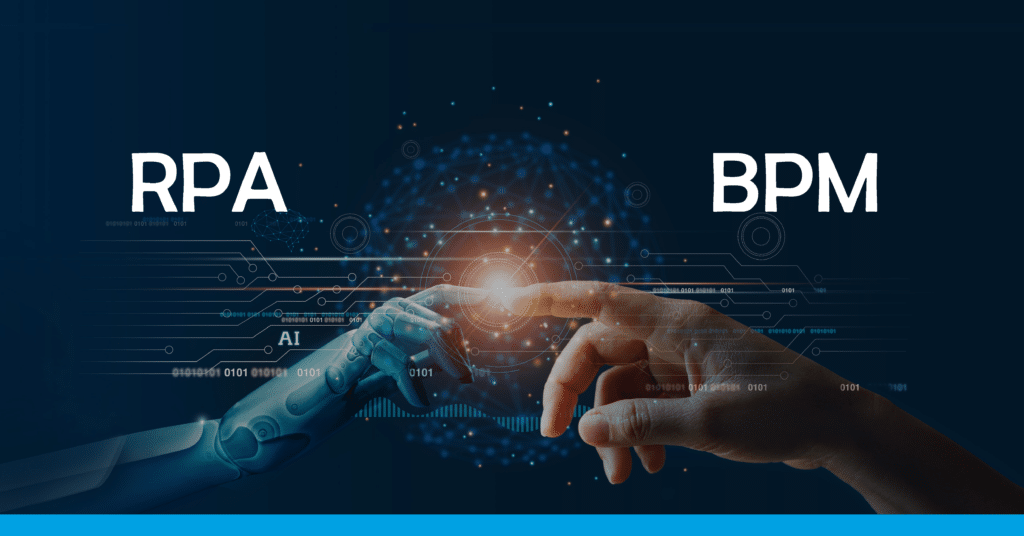In the dynamic landscape of modern business, where technological advancements continue to shape the way organizations operate, the synergy between Robotic Process Automation (RPA) and Business Process Management (BPM) has emerged as a remarkable catalyst for driving effective digital transformations. The convergence of RPA’s automation capabilities with BPM’s process optimization expertise presents a potent amalgamation that not only streamlines operations but also paves the way for unparalleled efficiency and innovation. In this exploration, we delve into the pivotal reasons why the fusion of RPA and BPM stands as an exceptional and transformative force, redefining the contours of business processes in the digital age.
1. Process Automation at Scale:
RPA, as the name suggests, focuses on automating repetitive and rule-based tasks. By leveraging software robots, RPA eliminates the need for manual intervention in mundane processes, reducing errors and speeding up execution. BPM, on the other hand, provides a holistic approach to process management by defining, modelling, and optimizing end-to-end workflows. When RPA and BPM are integrated, organizations can achieve process automation at scale. RPA handles the execution of tasks, while BPM orchestrates and manages the overall process flow, ensuring seamless integration and coordination across different systems and departments.
2. Enhanced Process Visibility and Control:
One of the key challenges in digital transformation is gaining visibility and control over complex business processes. RPA and BPM address this challenge by providing real-time monitoring and analytics capabilities. RPA bots can generate valuable data on process performance, bottlenecks, and exceptions. BPM platforms offer dashboards and analytics tools that provide insights into process efficiency, resource utilization, and compliance. Together, RPA and BPM enable organizations to identify process inefficiencies, make data-driven decisions, and continuously improve processes for better outcomes.
3. Flexibility and Agility:
Digital transformation requires organizations to be agile and adaptable to changing business needs. RPA and BPM offer the flexibility and agility necessary to meet evolving requirements. RPA allows quick deployment of bots to automate tasks without the need for extensive coding or system integration. BPM enables process designers to modify and optimize workflows without disrupting the entire system. By combining RPA’s task-level automation with BPM’s process-level agility, organizations can respond swiftly to market changes, customer demands, and regulatory requirements, ensuring a competitive edge in the digital era.
4. Seamless Integration with Existing Systems:
Successful digital transformation relies on leveraging existing IT investments and integrating new technologies seamlessly. RPA and BPM excel in integrating with legacy systems, ERPs, CRMs, and other enterprise applications. RPA bots can interact with different systems through user interfaces, APIs, or screen scraping techniques. BPM platforms provide connectors and adapters to integrate with a wide range of applications. By combining RPA and BPM, organizations can automate end-to-end processes across various systems, bridging gaps and eliminating silos.
5. Customer-Centricity and Experience:
Digital transformation is not just about improving internal processes but also enhancing the overall customer experience. RPA and BPM contribute to customer-centricity by automating manual tasks, reducing response times, and ensuring accuracy. RPA bots can extract and validate customer data from different sources, while BPM orchestrates customer journeys and ensures consistent service delivery. By combining RPA and BPM, organisations can provide faster, error-free, and personalised experiences, resulting in higher customer satisfaction and loyalty.
The synergy of RPA and BPM creates a potent force driving digital transformation. The integration of these powerful tools provides process automation at scale, offering enhanced visibility, control, flexibility, agility, and seamless integration with existing systems. This combination fosters a customer-centric approach, enabling organizations to optimize operations, enhance efficiency, and deliver exceptional customer experiences, establishing themselves as leaders in the digital age.
Harnessing the collective power of RPA and BPM is instrumental for businesses to pave the way for a successful and transformative digital journey. EPSoft’s EZFlow facilitates exploring the combined potential of BPM and RPA, ensuring well-orchestrated and end-to-end automation for process transformation.

